Open Root Vamp Patterns
As demonstrated in the video, the easiest place to begin creating vamps is to use one of the bottom three strings as an open, static root note (as in a fixed bass) and build on it using scale patterns.
By using the lowest three strings as our root, this gives us three open major and minor key tonic chords...
- 4th string - D major / D minor
- 5th string - A major / A minor
- 6th string - E major / E minor
So these chords become the lowest "starting position" for our patterns.
While you go through the patterns below, also take note of where the root notes appear on other frets/strings. For example, in A major/minor we have our open A note on the 5th string, but we also have an A root on the 4th string at the 7th fret.
Together, these root note positions give you a reference point for the key in which you're playing.
Major Scale
Most major key music is written by harmonising the major scale. Any sequences used from this scale will also be compatible with major pentatonic.
D Root / D major

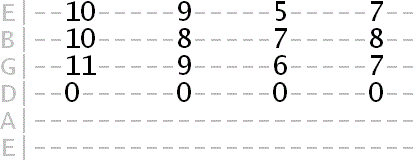
Tip: These patterns can look a bit overwhelming at first. As demonstrated in the video, start with just two strings, then build on your movements string by string. In some cases, two or three strings will be enough for a decent vamp!
A Root / A major


E Root / E major

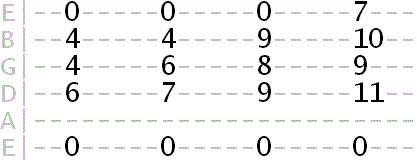
Lydian
Sharpen the 4th (♯4) in the major scale to get the rather eery sounding Lydian mode...
D Root / D major

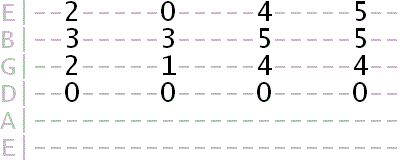
A Root / A major

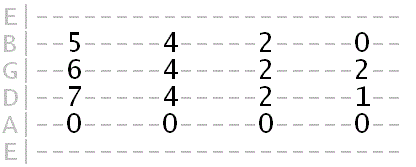
Tip: Where open strings are part of the pattern, try occasionally leaving strings open in your shapes/sequences for added vibrancy.
E Root / E major

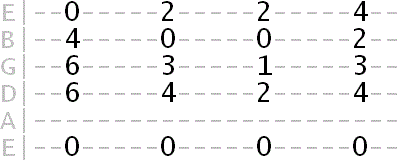
Mixolydian
Flatten the 7th (♭7) of the major scale to get Mixolydian - another common major key mode...
D Root / D major

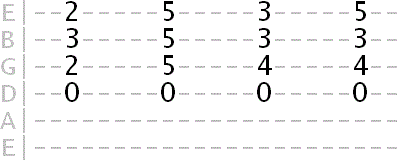
Tip: Try both picking and strumming your vamps.
A Root / A major


E Root / E major

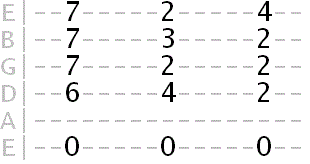
Phrygian Dominant
Get that flamenco sound by using this mode...
D Root / D major

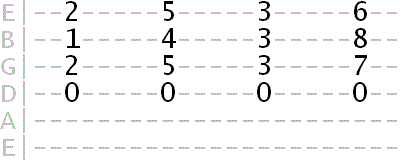
A Root / A major

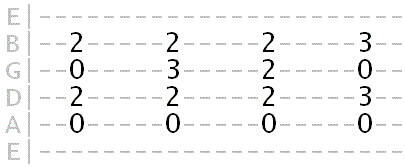
Tip: Try adding in lead phrases around your chord shapes using available fingers. For a good intro to this technique, see the chord melody lesson.
E Root / E major

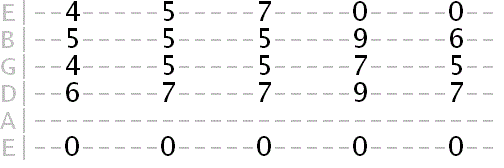
Natural Minor Scale
The most commonly used scale for minor keys...
D Root / D minor

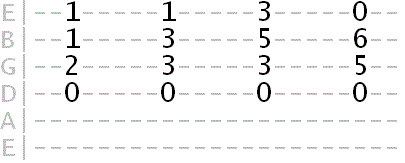
A Root / A minor


E Root / E minor

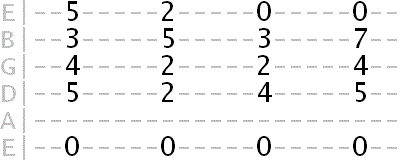
Tip: You don't have to stay within the scale. Use the scale as guidance, or as a starting point and see where your fingers (and ears) take you.
Dorian
A commonly used minor key mode. Same as natural minor but with a raised 6th which "opens" it up a little...
D Root / D minor

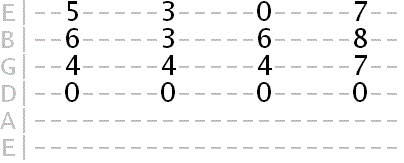
A Root / A minor

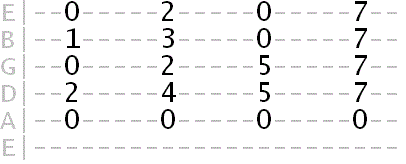
E Root / E minor

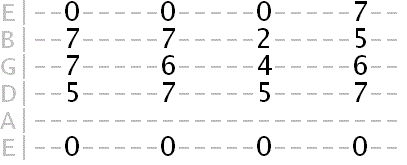
Melodic Minor
The elementary jazz minor key scale. Similar to Dorian, but has a more tense sound because of the raised 7th...
D Root / D minor

A Root / A minor

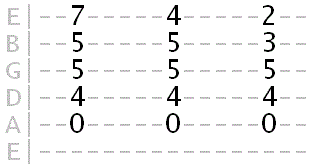
E Root / E minor

Ways to Use Guitar Chord Vamps
These vamp patterns have a few practical uses...
- Write backing tracks for practicing a related scale/mode. I recommend using Audacity to record your tracks.
- Allow you to confidently accompany vocals or other instruments in a given key.
- Give you a reliable framework for improvising harmony in a given key.
- Write your own hooks for songs.
Also remember that you don't have to stick to one scale throughout. Once you're confident with a couple of individual patterns, try changing between them in the same vamp and see what you can come up with.
This can even work switching from major to minor on the same root (e.g. major scale to melodic minor), known as a parallel key change.
In the next part we'll be moving out of the open position so we can play confidently in other keys. Until then, have fun exploring these vamp patterns and please let us know your thoughts/ideas using the comments form below!

